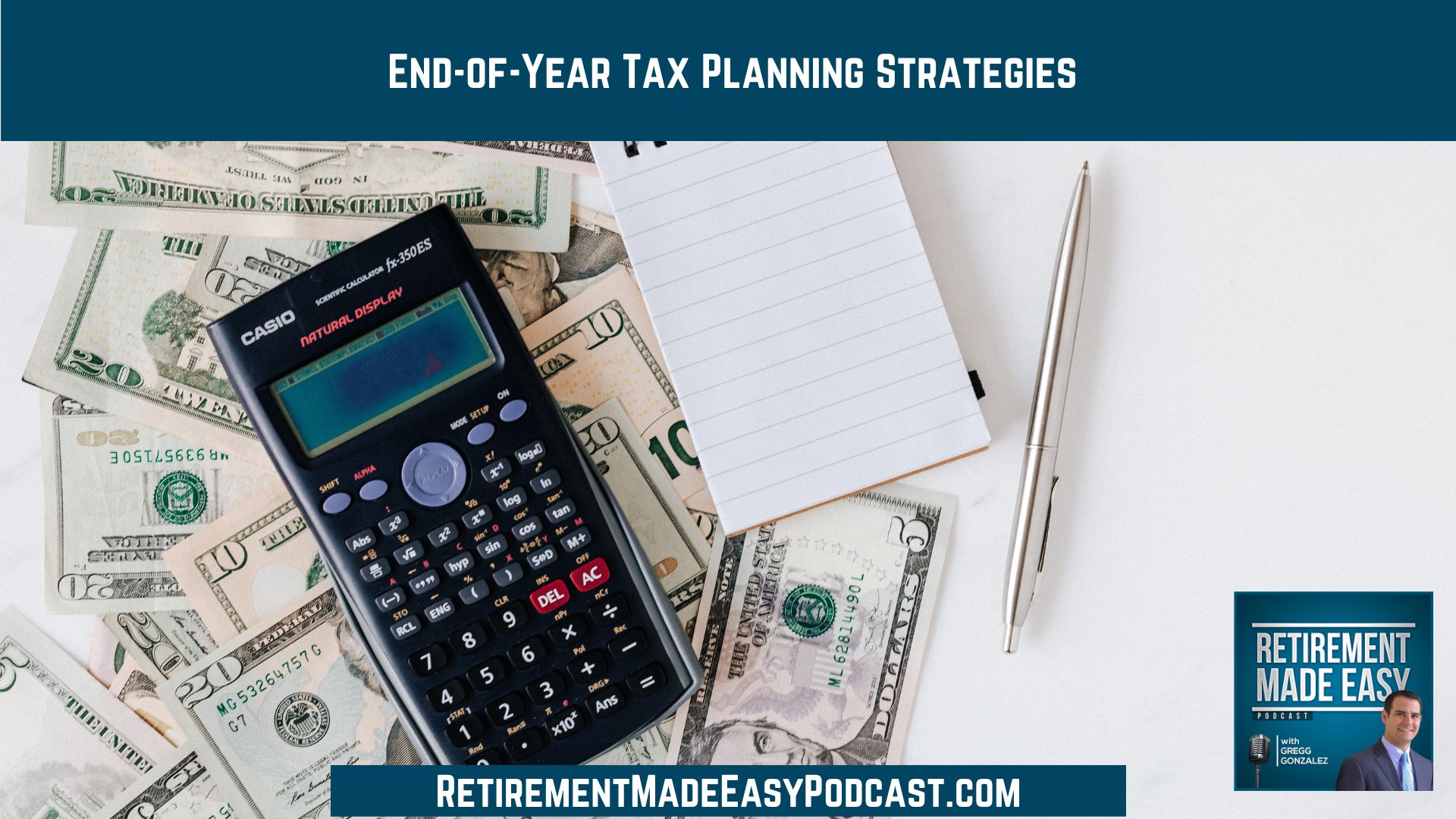
The St. Louis Cardinals broadcaster, Dan McLaughlin, was asked what makes the best professional baseball manager. He believes that the vision of a manager is one of their greatest attributes. They’re not just focused on the present, but looking forward and putting a strategy together based on what’s coming next.
When we are talking about end-of-year tax planning, we are looking at the years ahead, too. Why? Because it might change what we do today. So in this episode of the Retirement Made Easy podcast, I’ll share some end-of-year tax planning strategies that you should be mindful of.
You will want to hear this episode if you are interested in…
- [1:54] Get FREE resources at RetirementMadeEasyPodcast.com
- [2:47] End-of-year tax planning is forward-looking
- [6:04] Strategy #1: Charitable giving in tax planning
- [6:52] Strategy #2: Harvesting unrealized capital losses
- [7:55] Strategy #3: Roth conversions when the stock market is down
- [10:48] Strategy #4: Max out tax-deductible opportunities
- [11:12] Strategy #5: Rebalance your portfolio at the end of the year
- [13:25] Listener Question #1: Why do you need to find specialists?
- [17:37] Listener Question #2: Did contribution limits increase?
Strategy #1: Charitable giving in tax planning
What have you given this year? Do you want to give more to a favorite charity or nonprofit before the end of the year? If you’re 72, giving counts as qualified charitable distributions (QCDs), which can help with taxes. Donor Advised Funds allow you to bunch multiple years of charitable giving to get a deduction in one year.
Strategy #2: Harvesting unrealized capital losses
If you have unrealized capital losses, you might look at harvesting some of those before the end of the year. You can deduct up to $3,000 of capital losses in any one tax year. If you have capital losses exceeding $3,000, you can roll them over to the next year.
Strategy #3: Roth conversions when the stock market is down
This is one of the most popular planning strategies, partly because of the low tax rates implemented by the 2017 Tax Cuts and Jobs Act. The market is also down for 2022. So with investments decreasing in value, it’s an opportune time to do Roth conversions. Why?
Let’s say you have a $10 investment and it falls 20% to $8. You pay taxes on the $8 and move it into the Roth IRA (a Roth conversion). If the $8 in the Roth IRA rebounds and grows to $12, you don’t have to pay taxes on the growth. If you wait to do the Roth conversion until your investments rebound, you’ll have to pay taxes on the growth (so you’ll pay taxes on $12 instead of $8).
But why shouldn’t you convert too much to a Roth IRA? Listen to learn more!
Strategy #4: Rebalance your portfolio at the end of the year
If you have a Roth account, rebalancing won’t have any tax implications. But if your retirement portfolio is in a non-qualified account (brokerage, trust, etc.), you want to keep in mind any capital gains that might result from rebalancing. The market has been volatile, so rebalancing is a good strategy right now.
There’s one more strategy that I cover in this episode—listen to find out what it is!
Resources & People Mentioned
Connect With Gregg Gonzalez
- Email at: Gregg@RetireSTL.com
- Podcast: https://RetirementMadeEasyPodcast.com
- Website: https://StLouisFinancialAdvisor.com
- Follow Gregg on LinkedIn
- Follow Gregg on Facebook
- Follow Gregg on YouTube



